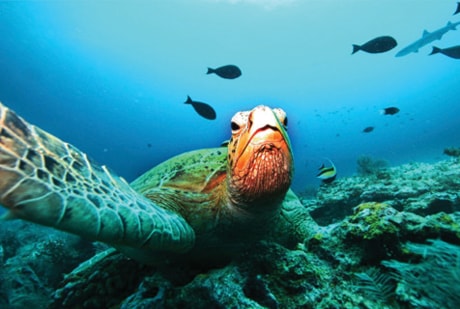Sometimes we have to be grateful for small mercies. The deal on biodiversity that more than 190 countries agreed in Nagoya, Japan last week was, as these things usually are, “a day late and a dollar short,” but it’s a lot better than nothing.
Technically, it was only the 10th biennial Conference of the Parties who signed the Convention on Biological Diversity (CBD) 18 years ago, but it was not just another meeting. It was a serious effort to move past rhetoric and come to grips with how to stop the slow-motion catastrophe of species extinction. (The current rate of extinction is at least 100 times higher than the historical rate, perhaps as much as 10,000 times higher.)
The negotiations went right down to the wire, but after three weeks of haggling they got a deal.
The most important target set by the Strategic Plan 2011-2020 will increase the area of protected land in the world — no farming or grazing, no forestry — from 12.5 per cent to 17 per cent.
That’s almost half the land that should really remain untouched if nature is to go on producing the “ecosystem services” that keep our environment relatively stable.
It’s a dollar short, of course: we will ultimately have to give 40 per cent of the land surface of the planet back to nature if we really want long-term stability. But it’s a good start.
Even more importantly, the strategic plan will increase the protected area of the oceans from only one per cent to 10 per cent by 2020.
The other big achievement of the conference is a deal that promises governments in the developing world, including their indigenous peoples, fair payment for genetic material that ends up in highly profitable first-world crops and drugs.
There are also useful measures to protect life in wetlands, forests, freshwater systems and coastal zones — and the financing to pay for it.
This is particularly encouraging after the climate change conference in Copenhagen last December ended in a complete train-wreck.
Both treaties were born at the Earth Summit in Rio de Janeiro in 1992, an event that was extraordinary in its ambition.
The Cold War had just ended, the notion of a single global civilization was gaining ground, and the realization was dawning that the sheer scale and heedless economic style of that civilization were starting to devastate the environment that supported it.
The climate change treaty was intended to tackle the key issue of global warming, but people were beginning to understand that everything joins up. About 40 per cent of human greenhouse gas emissions, for example, come from forestry and agriculture, and those same activities are destroying the living species, many of them microscopic, whose interactions maintain the environment we live in.
But nothing much happened after the biodiversity convention.
The rainforests continued to be cut down, the world’s fisheries drifted closer to collapse, and though many deplored the neglect, no government did anything about it.
After a good start in the 1990s, the climate change accord also stalled after the United States began actively sabotaging the talks under President George W. Bush.
Now the world is emerging from that wasted decade, and all sorts of things that were put on hold at the height of the terrorist panic, or just postponed because the United States wouldn’t play, are back on the agenda. Not always with instant success, as the Copenhagen shambles amply demonstrated — but real progress is possible again, and last week in Nagoya is the proof of that.
Of course, you probably expected me to write about the two little explosive packets found aboard cargo aircraft last week, because that’s so much more exciting than the fate of the planet.
But everybody else is doing that, and there really isn’t much new to say about it anyway.
Apart from the observation that a civilization that thinks the biggest threat it faces is terrorism is a dangerously deluded civilization.
Gwynne Dyer is a freelance Canadian columnist and author living in London.
